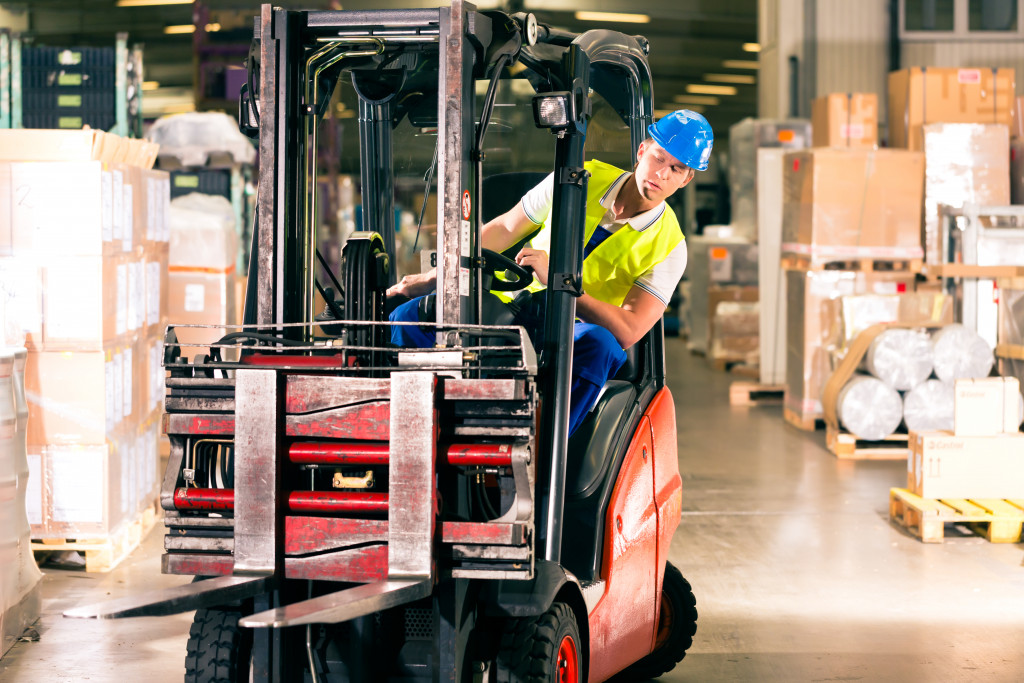- Efficiency is crucial in warehouse operations for success as it directly impacts product availability, delivery times, and customer satisfaction.
- Automation improves productivity, reduces errors, and relieves workers from repetitive tasks.
- Automated storage and retrieval systems save time and optimize space in more extensive operations.
- Conveyor belt systems increase efficiency and decrease the risk of injury or product damage.
- Custom lifting equipment is necessary for specific needs, such as unusual load shapes, weights, or sizes.
Warehouse operations form the backbone of supply chains, directly impacting product availability, delivery times, and customer satisfaction. As such, inefficiencies can ripple through a business, affecting reputation and revenue.
One key to enhancing warehouse operations lies in the strategic use of equipment, not just in automating tasks but in ensuring these machines are precisely suited to the job at hand. This article explores how the right equipment choices can streamline processes, save time, and provide a safer work environment.
Enhancing Efficiency through Automation
In the modern warehouse, automation is less of an option and more of a necessity, especially when competing globally. Implementing automated systems can significantly speed up processes, reduce errors, and relieve your workforce from repetitive and strenuous tasks.
Automated Storage and Retrieval Systems
These specialized systems are revolutionizing inventory management. By automating the storage and retrieval of goods, warehouses can ensure more efficient use of space and quicker processing times, reducing the window between order placement and dispatch. These systems are particularly beneficial in more extensive operations where manual retrieval can be time-consuming and prone to errors.
Conveyor Belt Systems

The humble conveyor belt has been a warehouse staple for decades and with good reason. These systems are integral in moving products efficiently through a warehouse, from delivery to dispatch. By reducing the need for manual handling, conveyor belts speed up the movement of goods and decrease the risk of product damage and worker injury, contributing to smoother, safer operations.
Importance of Custom Solutions in Material Handling
While standard equipment can handle general tasks, warehouses often have specific needs based on the type of goods they take or their unique challenges. Custom solutions in material handling equipment and management systems can address these needs more effectively.
Benefits of Custom Lifting Equipment
Every warehouse is different; sometimes, off-the-shelf lifting solutions don’t fit the bill. This is where custom lifting equipment comes into play. Designed to meet the specific requirements of your operation, these tools can handle unusual load shapes, weights, or sizes, ensuring safer and more efficient movement throughout the warehouse.
For instance, custom lifting equipment can be designed for delicate handling requirements, specific spatial constraints, or special operational sequences, providing a level of precision and safety that standard equipment may not offer.
Tailored Warehouse Management Systems (WMS)
Beyond physical equipment, software solutions like a tailored Warehouse Management System (WMS) can be a game-changer. A customized WMS can streamline everything from inventory tracking to data management, designed with your warehouse’s specific challenges and goals in mind. This tailored approach ensures more accurate data, more accessible access to information, and more streamlined communication among different departments.
Prioritizing Safety in Warehouse Operations
Safety is a paramount concern in warehouse operations. It’s not just about compliance with regulations; creating a safe work environment reduces the risk of accidents, improves worker morale, and contributes to the overall efficiency of operations. This section delves into the integral aspects of safety equipment and best practices in the warehouse.
Safety Equipment and Protocols
Every piece of equipment in a warehouse should be selected with safety in mind, but there are also specific safety tools and protocols designed to prevent accidents. Essential equipment includes safety barriers to direct traffic and prevent collisions, high-visibility clothing for staff, and emergency stop buttons on heavy machinery.
Protocols are equally important, ensuring everyone knows how to act in emergencies and operate equipment safely. These might include clear signage, established evacuation routes, and protocols for reporting and responding to accidents.
Regular Training and Equipment Maintenance

Safety isn’t a one-time setup but an ongoing process. Regular safety training ensures all staff members know best practices and emergency procedures. They should be trained not only in personal safety but in recognizing potential risks and hazards in their environment.
Maintenance is the other side of this coin. Even the best equipment can become a hazard if it’s improperly maintained. Regular checks and servicing will keep the machinery running smoothly and safely, preventing malfunctions that could endanger staff. This routine also applies to custom lifting equipment, which might require specialized maintenance to ensure safe operation.
Final Thoughts
Streamlining warehouse operations requires a careful balance of efficiency and safety. By investing in automated systems, custom equipment, and robust safety protocols, warehouses can create an environment that maximizes productivity while safeguarding the well-being of their workers.
Staying abreast of the latest equipment and safety standards will be vital to maintaining a competitive edge as the industry evolves. Decision-makers must, therefore, see these investments as stepping stones to tremendous operational success and worker satisfaction.




